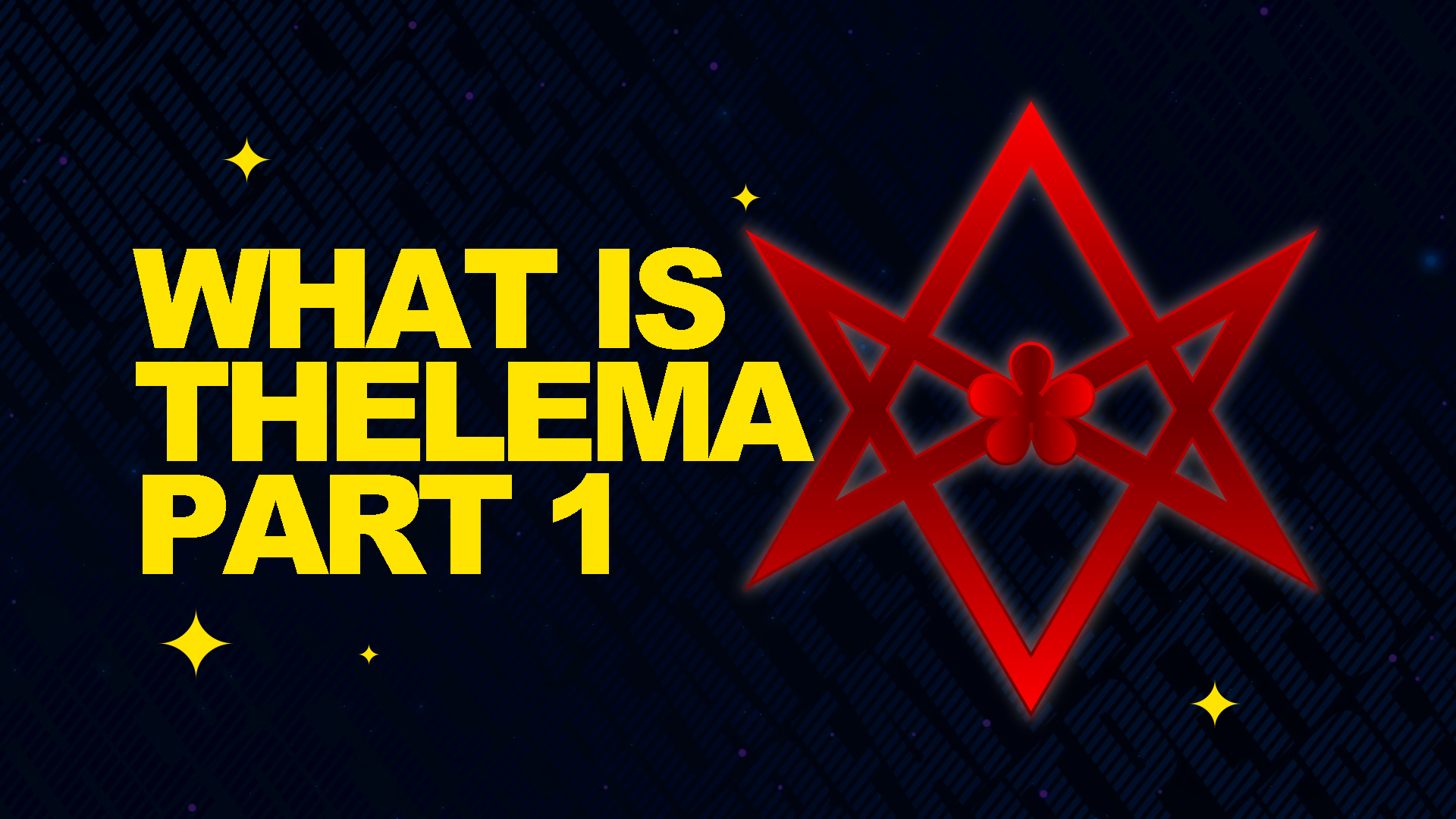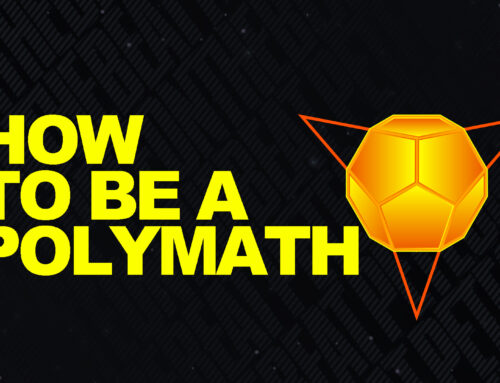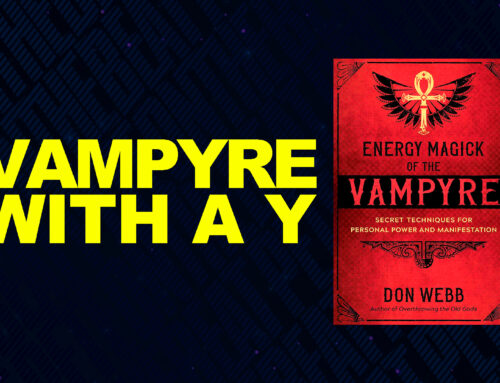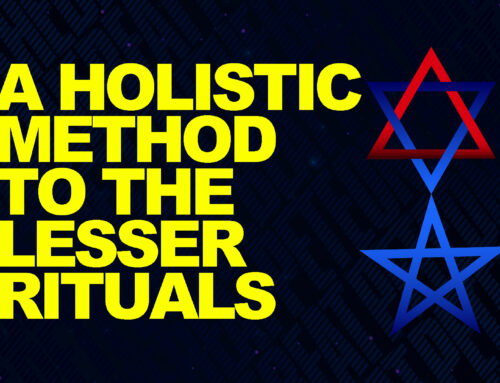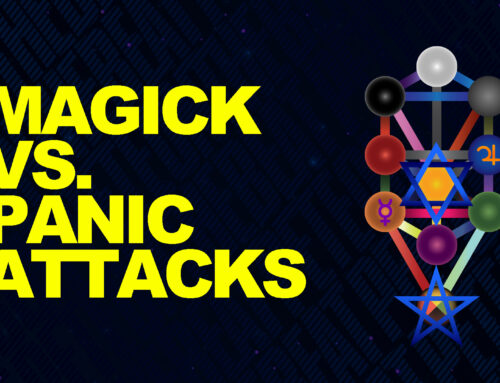Thelema
The word ‘Thelema’ is transliterated from the ancient Greek noun’ θέλημα,’ ‘will.’ Its meanings include ‘purpose,’ ‘wish,’ ‘want,’ and ‘desire.’ In early Christianity, Thelema often referred not just to one’s but more so to the divine (or God’s) ‘will.’ An example is ‘Thy Will be Done’ in the Lord’s prayer, alluding to ‘holy will.’
Modern Thelema
Found in 1904, Thelema is a system for spiritual attainment incorporating mystical, magickal, and religious methods. Also regarded as ‘spiritual philosophy,’ Thelema was brought into being by Aleister Crowley. In that manner, Crowley’s works are the only canonical. And according to most, Thelema is a Law.
Before getting into that, this post is part of a series on Thelema’s basics. It focuses on origins, pantheon, and principles. The second part deals with its concepts and Law of conduct. Given that, consider subscribing if you find the content valuable and entertaining.
Aleister Crowley
Also known as Perturabo, The Great Beast (666), The Master Therion, etc., Aleister Crowley was quite a Renaissance person. His crafts included ceremonial magick, writing, poetry, mysticism, yoga, mountaineering, and even painting in his early life. Crowley was initiated into the Hermetic Order of the Golden Dawn. But later, he gave up on magick becoming a yogi. Eventually, things changed. During his honeymoon in Cairo, Egypt, with his wife, Rose Crowley, Crowley experienced a synchronicity leading to a chain of events. And that culminated in The Book of the Law’s dictation.
The Book of the Law
Also called ‘Liber vel Al Legis,’ ‘The Book of the Law’ is Thelema’s central text. Yet, others are also considered ‘Holy Books of Thelema.’ While its interpretation is ‘prohibited,’ Crowley encourages individuals to find their meaning, which applies to most things Thelema. The Book of the Law was ‘received’ by Crowley through the prescriptions of an ‘otherworldly’ non-corporeal being — called Aiwass, that is, Crowley’s Holy Guardian Angel, Personal Daimon, etc.
Aiwass
In the Book of the Law, Aiwass presents himself as the earth-ruling forces’ minister and speaker. Through this’ communication,’ Crowley claimed he brought a New Age in which he played a crucial role as the prophet. And this new age is the Aeon of Horus.
Aeonics and Magickal Formulae
Thelema recognizes three Aeons, i.e., stages in humanity’s development. This is based on the race’s understanding of itself, the Universe, and its place. The technical term for deities swapping places, and thus Aeons changing, is Gods’ Equinox.
Dark Ages
Crowley calls a new Aeon’s beginning its dark ages due to paradigms clashing and structures falling apart. On the contrary, a ‘new Aeon taking off’ doesn’t (necessarily) mean a new god comes and punishes the former. It marks a more recent evolutionary stage of human consciousness. And that is both collectively and individually.
The Aeon of Isis
Overlapping with the age of Leo, the Aeon of Isis was the first stage associated with matriarchy. Its formula was that Earth is a mother and life-giver, associated with the ‘great goddess.’ Its core mystery was women’s period and pregnancy corresponding to the moon phases.
The Aeon of Osiris
Identifying with Pisces and patriarchy, the Osirian era was when farming developed. After recognizing the Sun’s crucial role, humans started liking it to the male semen. Rather than seeing creation as a collaboration between male and female, they viewed the divine as an abusive father figure dying every day when the Sun went beyond the horizon. Hence, IAO, the dying God’s formula, was born. While that’s discussed in my Rose Cross video, a big part was sacrificing and submitting oneself to the male God, usually through denying one’s flesh.
The Aeon of Horus
Starting with The Book of the Law’s dictation, the Aeon of Horus reconciles and transcends the two previous. It is symbolized by the ‘crowned and conquering child’ striving for self-sufficiency, as the child represents never-ending growth. Evidence of the Aeon of Horus includes destroying the patriarchal rule of European kings and the illusion of the church’s ubiquitous power, such as women having equal rights in many places. Unlike before, now the individual is society’s most basic monad. On the other hand, The Book of the Law clarifies that the ‘child’ also represents humanity’s (substantial) immaturity, resulting in various political conflicts and totalitarianism.
“Consider the outcrop of dictatorship, only possible when moral growth is in its earliest stages, and the prevalence of infantile cults like Communism, Fascism, Pacifism, Health Crazes, Occultism in nearly all its forms, religions sentimentalize to the point of practical extinction…” (…) “Consider war the atrocities which occur daily and leave us unmoved and hardly worried…”
“We are children…”
Comment
Juxtaposing parts of ‘In Search of Being,’ with the last, one may find commonalities between what Crowley calls a ‘child’ and what Gurdjieff defines as a ‘machine.’ Namely, when Gurdjieff points out to Ouspensky how, by large, people remain unmoved by the horrors of war, let me know if you agree.
Thelemic Pantheon
Purely symbolic or not, Thelema incorporates a few deities. Adopted from ancient Egypt, the main ones speak in the ‘Book of the Law,’ each having a dedicated chapter.
The Stele of Revealing
Discovered in 1858 by Francois Auguste Ferdinand, the funerary Stele of the Prophet Ankh-f-n-Khonsu is a wooden stele on which Rose Crowley recognizes Horus. That was with surprising accuracy, considering her non-existent interest in religion. After getting the hieroglyphs’ translation, Crowley named the deities Nuit, Hadit, and Ra-Hoor-Khuit. Hence, the speakers in The Book of the Law. At some point, he also claimed himself Ankh-f-n-Khonsu’s reincarnation.
Egyptian Deities
Although it may seem so, Thelema isn’t an Egyptian religion’s extension. It employs Egyptian deities for what Crowley calls ‘literary convenience.’ And the reason is that they convey Thelema’s main principles.
Main Principles
The Book of the Law claims it ‘explains the Universe.’ Particularly the two principles (or elements) emanating reality. The first is space and matter, including nature and its possibilities’ totality. The second is the personified identity, the point (or viewpoint) experiencing those possibilities. While these principles are represented by Nuit and Hadit, elsewhere, Crowley recognizes Shiva and Shakti as (also) suitable. And as scholars stress, maps are not the territory. Often, different ones depict the same.
Nuit and Hadit
Originally, Nuit is the Egyptian Star goddess ‘Nut,’ which means Night. Based on my research, Crowley (actually) named Hadit regarding him as ‘The Sky Lord.’ Being masculine, Hadit is the pure Will and desire to live and express oneself by causing changes. Hadit means ‘he-goes.’ This alludes to him being the primordial initiator of all events. Also, to him being manifested as the life force ‘Chiah.’
On the other hand, Nuit is feminine. She constrains, providing conditions, context, and environment for Hadit’s events. She also unravels new possibilities and is the surrounding external, the number zero, alluding to female genitals.
Chokmah and Binah
Chokmah and Binah house Hadit’s and Nuit’s lower manifestations, the Beast and Babalon. As mentioned in my video on the Sephiroth, Binah turns Chokmah’s activity into form.
Everyone is a Star
Thelema has two main prescriptions. Found in The Book of the Law’s chapter two, the first is that ‘Every man and woman is a star.’ Returning to the notion of ‘Divine Will,’ this conveys that each person’s ‘Will’ is a holy extension of God’s. Complete and self-sufficient, every human being uniquely expresses the divine. Said differently, the individual is an expression of the universal, containing within itself the highest and purest divinity.
God is Not External
God is not external but the deepest part of one’s soul, which Thelema calls the ‘Khabs,’ or the ‘star.’ According to the Book of the Law, that is an ‘aggregate of experiences constantly changing with each fresh event.’ Defined as interactions between Nuit and Hadit, these are one’s life experiences happening consciously and unconsciously.
Do What Thou Wilt
Thelema’s second and ‘more notorious’ prescription is found in The Book of the Law chapter 3. This is ‘Do What Thou Wilt.’ Unlike what some think, this is not permission to do whatever you want. Quite the opposite. It teaches finding your True Will and sticking to it no matter what. While the True Will overlaps with activities and paths you feel innately driven to; these are usually stepping stones, stages, or parts of it.
The True Will
In plain terms, the True Will is your ultimate life purpose or soul mission, which Thelema views as holy and divine. It’s what you are here to do — a dynamic and changing sequence of experiences. It’s unique and peculiar to each person, yet it’s in harmony with the Universe.
Fortune
This can be found in the Fortune card, where there’s apparent diversity of the pentagrams, i.e., individuals in Nuit’s body. While different, they are perfectly aligned with the cosmic order. From this perspective, each star has its orbit, symbolizing the True Will. Each star is a center of gravity and light. And as you know from self-help, you are the most ‘important person’ in your life.
Fay Ce Que Vouldras
The concept of ‘Do What Thou Wilt’ precedes Crowley. Influenced by the classic ‘Hypnerotomachia Poliphili,’ the French Renaissance and Greek scholar François Rabelais invents a fictional abbey of Thelema. His Gargantua and Pantagruel novels encapsulate the motto ‘Fay Çe Que Vouldras’ or ‘Do What Thou Wilt.’ While this informs Crowley (significantly), Rabelais’s Thelema (also) resurfaces in the utopian romance “The Building of Thelema” by Sir Walter Besant and James Rice.
The Song of Your Life
The True Will is the underlying motif of the song, which is your life. The more you do it, the more you hear it. Finding it requires peeling back the personality layers, discovering who you are at your core, and then doing that and nothing else. As Crowley says: ‘You have no right but to do thy will…’ And apparently, this is both liberating and quite restrictive. More on that in a moment.
Love Under Will
This is where another critical concept enters the picture: ‘Love Under Will.’ It describes when Nuit’s and Hadit’s permanent interaction produces continous growth aligned with one’s True Will. You can think of it as deliberately created or orchestrated events/experiences promoting and facilitating that. Crowley also calls magick ‘Love Under Will,’ as Magick is one of the essential tools for accomplishing the former. Yoga is another, as addressed in part 2. Simply put, ‘Love Under Will’ expresses your most authentic Self in the collective. And that is by connecting the deepest parts of your soul with the same ones in reality.
Gradual Unfolding
The True Will unfolds as you progress to self-knowledge and mastery. So, it may be optimal to remember Dr. Martin Luther King’s words: “You don’t have to see the whole staircase just to take the first step…”
Living Thelema
In his Living Thelema Book, Thelemic Scholar and Jungian psychologist David Shoemaker offers to view yourself as the priest or priestess of your religion, which is your True Will. He adds that finding your True Will is strictly individualized, and no two experiences are alike.
Also, that awareness of the True Will exponentially increases after obtaining Knowledge and Conversation of your HGA, which is Thelama’s first and primary goal. The second is crossing the abyss, but that deserves a separate post.
“The True Will is the essence of yourself. It encompasses you, your actions, your thoughts, and your feelings, and it pertains to (the way) you live moment to moment, as well as the entire arc of your life itself — and even beyond one life into other incarnations. (…) There is often, however, a great deal of overlap between the True Will and what one chooses to spend time doing in life — one’s occupation or favorite hobbies…” (…) “Much of the time, the discovery of the True Will is a slow and gradual process, occasionally punctuated by breakthroughs of insight.” (…) “The process is incredibly individualized, and no two seekers will experience its peaks and valleys in the same way…”
p.22/3 Living Thelema
Comment: Ikigai
The notion of the ‘True Will’ is not exclusively Western. Somewhat similar is the Japanese Ikigai. Ikigai translates as ‘a reason for being.’ It expresses having a life purpose and being motivated. Ikigai is also the deep sense of fulfillment and accomplishment resulting from progressing with one’s life purpose. It’s also how one connects to the collective. While they may vary, diagrams depict Ikigai as the ‘epicenter’ or ‘intersection’ of your skills and talents, passions, world’s needs, inner calling, etc. And this sounds quite Thelemic. Let me know if you agree.
The Inertia of the Universe
Crowley explains: “A man who does his ‘True Will’ has the inertia of the Universe to assist him…” Marco Visconti clarifies that the True Will is not conscious intent.’
Willpower
Your ultimate life purpose permeates your being’s entirety. It is independent of the amount of willpower you can exert, which, as we know from modern science, is limited. Though choices and habits letting you follow it may require some self-control, the more you do, the less you’ll need. On the contrary, the less Love Under Will you practice, the more willpower you’ll need to oppose reality. More on that in part 2. This may be a good indication of finding whether something belongs to your True Will. Let me know if you agree.
Geburah
While the True Will is not willpower. It’s worth noting that as an expression of the universal, the individual Will is attributed to Geburah, the sphere of Mars. This is also where the ideas behind willpower come from. That is sacrificing one option for another for the greater good, as Geburah is the ‘Sacrificial Priest.’ Given that (likely) the most prominent willpower expert, Kelly McGonigal, defines willpower as much more than self-control. She views it as making us individuals in a society, which IMHO compliments Crowley’sStars in Nuit’s’ body.
This makes sense as following your True Will implies defining yourself, setting boundaries, and making (sometimes) tough choices, and thus sacrifices. As discussed in part 2, it is being your own God, guru, coach, and person to rely on. Willpower is not your True Will, yet understanding and utilizing it properly is essential. You may find spending too much on stuff useless to your True Will. Let me know if you agree and want a video on that.
“A man whose conscious will is at odds with his True Will is wasting his strength. He cannot hope to influence his environment efficiently.”
“A boy’s instinct may tell him to go to sea while his parents insist on his becoming a doctor. In such a case, he will be both unsuccessful and unhappy in medicine…”
Genetic Predisposition
Besides the covered metaphysical explication, Israel Regardie’s student, founder of Falcon Publishing, and Thelemic Golden Dawn Co-Founder Alan Ronald Miller, aka Dr. Christopher Hyatt, defines the True Will as your genetic predisposition. Thus, following it is developing and making the most of your unique skills and talents.
Self Discipline
Crowley recognizes self-discipline as the key to following the True Will. On the contrary, while requiring effort, some things will always feel natural and somewhat deeply sense-making while others won’t. Considering Hyatt’s definition, self-discipline also implies filtering and pursuing the things belonging to your True Will, which may take some decision-making and, thus, willpower. But that’s just my opinion. Let me know what is yours such as your thoughts on this article and video.
- An Autobiography of Trauma Book Review - April 23, 2024
- Reflections on Being a Polymath - April 12, 2024
- Greater Hexagram Ritual Manual Overview - March 31, 2024
